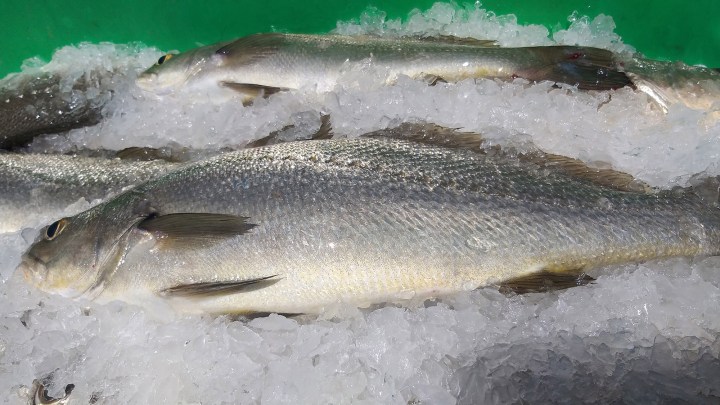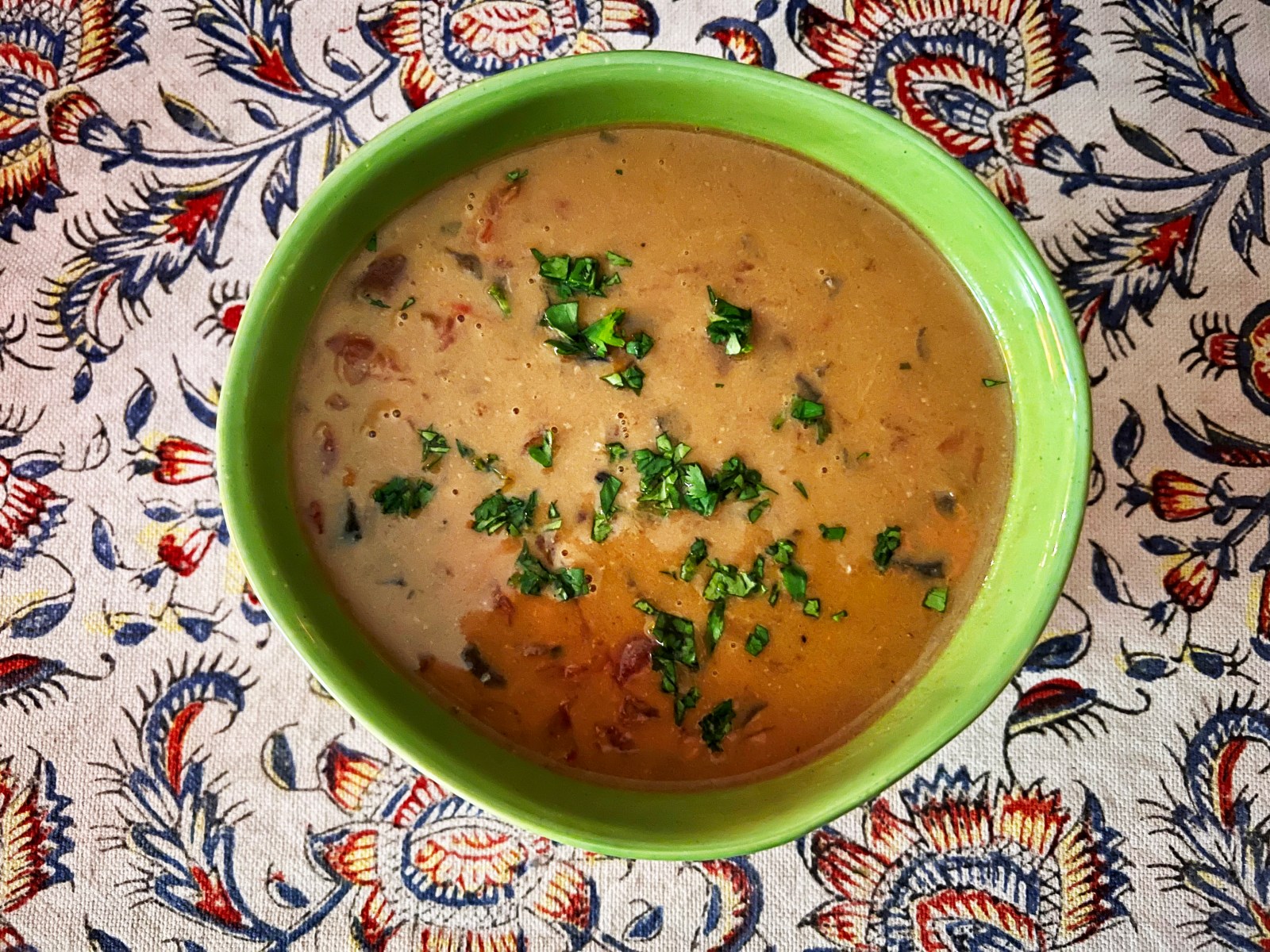FISH FARM TO FORK
The light and darkness of a Karoo fish braai

A seafood braai in the Eastern Cape Karoo? There’s no reason why not. Even Karoo denizens crave the delicacies of the sea and are happy to take a break from the mutton tjoppies once in a while.
It came from the East. It was sleek, long and shiny, like an oversized silver bullet. It was destined to make a roomful of Karoo people very happy, not least because, though we live far inland, we have a taste for the creatures of the great oceans we visit when we go down to the coast. Sometimes we bring them back. And sometimes they come to us.
This beautiful creature had been farmed in East London, and had been sent by its owners on the back of a bakkie, packed in masses of ice in a polystyrene container. It was a green-listed kabeljou, a.k.a. Kob. The wild ones are red-listed but we can still have our kob and eat it.
Kob is a prized fish whose flesh makes delicious and sensuous eating, but it has not been available to us for a long while, or at least to those of us who honour the SASSI conventions of which fish to eat and which not. Kabeljou is red-listed, as in verboten, but this kob was farmed by the enterprising people at Kingfish Enterprises, a land-based marine fish farm operating in the East London Industrial Development Zone. They produce market-ready kob/kabeljou year-round (up to 300 tons), and yellowtail will be available towards the end of 2023. They send their wares to 30 of the larger Woolworths Food stores as well as the hotel and restaurant industry, and some speciality seafood retailers.
Kingfish Enterprises manager Andre Bok, who studied marine biology and then ichthyology at Rhodes University in the Nineties, has worked in the marine aquaculture and large marine aquarium industry ever since. He sends fresh fared kob to Cape Town once a week and made a plan to divert the shipment via my home town in the Eastern Cape.
And that is just one way that we in the deep Karoo find ourselves able to have a seafood braai once in a while. More usually we bring fish back ourselves when we visit the coast at East london or Gqeberha or towns in between.
Only days earlier, more of the bounty of the sea had passed through our town, having come from Saldanha Bay. This was one of those refrigerated trucks that are sent to the small towns once in a while to take advantage of our lust for Neptune’s catch. The only problem is that this particular concern only has fairly large boxes of fish and prawns. And while we can use the odd fish here and there, there can’t be many of us who will buy whole boxes of masses of kingklip or dorado cutlets to freeze over the medium to long term. I did however indulge in a sizable box of sizable prawns, and they turned out to be of excellent quality.
So, a seafood braai needed to be arranged, and pronto. The gang was summoned and we gathered. In the meantime, work had begun many hours earlier, because seafood needs to be defrosted slowly. This fish came out of the freezer the night before, just before I went to bed, and was still frozen solid the next morning. (It was a chilly Karoo night.)
The prawns went into a sink full of cold water, which is the cleanest and most efficient way to defrost prawns and calamari, preferably in their plastic packets if that’s how you buy them. They don’t take very long at all to defrost. The fish was left in a cool spot, on a tray.
There were 30 prawns in the box, and they were really big boys. If they were sporting fish they’d have been on the rugby team while the shrimp played hockey. I decided that 20 of them would become a bisque while the remaining 10 would be cooked separately to add a prawn each to the main course of kabeljou and calamari.
The kob would be butterflied and grilled on the braai with a basting of burnt rosemary butter. I wanted a change from the bleeding obvious of basting it with either lemon butter or garlic butter or a mix of both. I almost invariably do that with fish and prawns, and who doesn’t? They’re perfect; ideal; classic.
But a change is refreshing, so I melted lots of butter with a few rosemary sprigs and let the butter take on just a little caramel colour. Then it was left to cool to room temperature and sit on the stove until I was ready to cook it that evening. This is the sort of thing you can do well ahead, even in the morning, to free yourself of irritating details to be cooked when your guests have already arrived. The less left to be done, the more you can socialise with them.
There was some interplay too. The fish head was cut off and went into a big pot with the prawns’ heads and bits and pieces of carapace to help form a rich, deeply flavoured stock made with onion, celery and carrots.
Then I strained the stock and left it to one side while I simmered onions in oil and then added a healthy glass of wine and reduced it by half. Then the stock went back in, followed by two cans of chopped tomatoes, cooking it more with each addition. Finally two cans of coconut cream went in and now we were looking at a fine bisque which only needed the chopped prawns to be added briefly with a bit of deft seasoning. Some diluted cornflour brought it all together but I chose not to blend it as I wanted the texture of the prawn meat. The flavour was deep and satisfying and there were many happy sighs at the table later.

Prawn bisque, for which we published the recipe this week. (Photo: Tony Jackman)
All through this we were in Eskom darkness. For four hours of a party. I was able to photograph the bisque with the clever use of candlelight but by the time the fish was ready to be served, the blackness was too much and I caved in to defeat. Carefully extricating a whole fish from a braai grid by measly solar lamp light outside at night is not conducive to photography.
Light of a different kind entered the dining room later though when The Foodie’s Wife brought out her simple but delicious microwave chocolate cake which, once upon a time, had been a viral hit during lockdown, and which now came to our rescue during Eskom’s imposed darkness of another hue. DM/TGIFood





 Become an Insider
Become an Insider
Comments - Please login in order to comment.